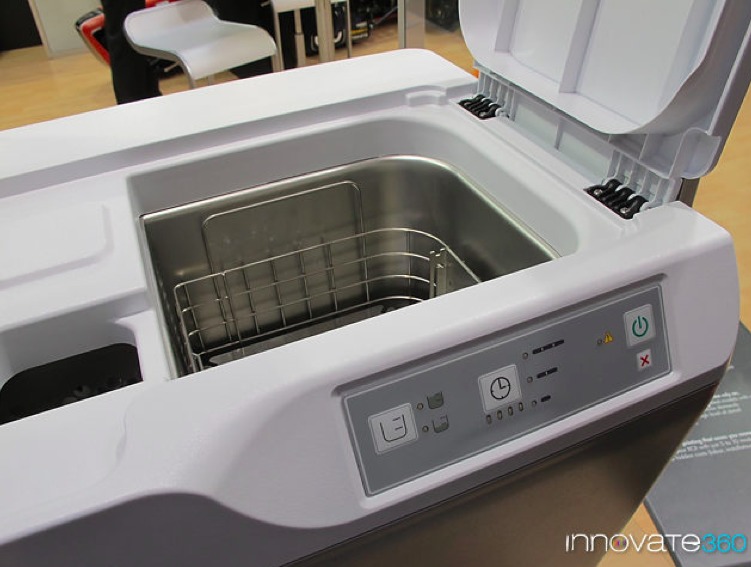In the last month of 2014, we made a change to the Long Only Sector Rotation portfolio by adding Hewlett-Packard (HPQ).
I am positive about the long-term performance of 3D technology stocks despite the underperformance of 3D Systems (DDD) and Stratasys (SSYS) in 2014.

Capital spending
In my opinion, the growing usage of the technology and the global economic recovery should gradually lead to higher capital spending, which should bring outperformance in these stocks in the coming months.
We added HPQ to have a diversified exposure to the 3D stocks as this company has unveiled its own 3D printer product.
Furthermore, the stock is attractive on valuation basis and the company has been improving its profitability. We believe that the company’s top-line earnings would also improve as the commercial usage of 3D printers expand.
Market outlook
The Standard & Poor’s 500 Index climbed more than 13.5% in 2014. This followed its 30 percent advance in 2013 and a 13 percent rise in 2012.
Going forward, performance of stock markets will depend on the timing of the Fed’s interest rate hike, the speed of recovery in the Eurozone and whether or not the growth deceleration in China and Japan shows signs of stabilization.
The end of 2014 brought more instability in the Eurozone as the Greek parliament failed to elect a new president, forcing the country to hold a general election.
That raises the risk of anti-austerity government coming into power and the Euro hit the nine-year low against the US dollar.
Greek exit
While European hardliners continue with their rhetoric about the importance of Greece’s abiding by its austerity commitments, the election of anti-austerity government may push Greece towards the exit of the Eurozone, with possible contagion risks.
Clearly, if such an event occurs, markets would experience a lot of volatility, similar to the one after the bankruptcy of Lehman Brothers.
However, in my opinion the growth situation in Europe may improve in 2015 even in the worst case scenario of a Greek exit.
ECB move
The ECB is planning to start its program of broad-based asset purchases, which includes sovereign bonds.
Extreme liquidity coupled with a very weak euro and a very low oil price should stimulate both consumer spending and exports.
As the business outlook improves, European companies may start increasing capital spending.
As the uncertainty continues about the Greece’s election result, it is likely that gold and silver stocks will perform well as the price of precious metals increase.
In my opinion, the robust global stock markets and the impact of a quantitative easing in the Eurozone would outweigh the concerns about the Greek exit.
Oil
One of the biggest headline grabbing news of 2014 was the oil price falling below $50 a barrel.
As OPEC refuses to cut production to keep its market share, it is likely that 2015 will mark the end of the U.S. shale boom which brought the US closer to energy self-sufficiency.
The shrinking oil revenues of Russia and Iran would likely to cause a severe recession in these economies.
In the US, I expect the companies that provide fracking services will be negatively impacted by the energy slump as the current price is already below the break-even for the majority of the companies.
I expect a rebound in the oil price in the second half of 2015, as the ECB measures start showing its positive impact on the Eurozone growth.
U.S. outlook
Overall, in my opinion the U.S. economy should grow around 3% in 2015.
The falling oil price should to provide a positive stimulus to consumer demand benefiting particularly the retail and consumer discretionary stocks.
Had the inflation and interest rates not been so close to zero to start with, the positive impact of the low oil price on the US and the global economy would have been much more substantial.
Although the appreciation of the US dollar would increase imports and lead to a dampening of exports, these negative effects would be somewhat offset by stronger growth in the major export destinations for the US companies such as Mexico, Canada and the UK.
Stocks
Given that inflation remains very low and the dollar is strong, any increase in interest rates is likely to be symbolic in magnitude, and we expect the rates not to rise above 1% till the end of next year.
As the unemployment rate falls below 6%, clear signs are emerging that the US labor market is gaining momentum. Payrolls increased by 321,000 jobs in November, the most since three years.
Despite the strong economic backdrop in the US, markets awarded the defensive sectors in 2014. The utility sector’s stocks rose by 24 percent, outpacing technology companies which recorded 18 percent.
In my opinion, equity markets may lose some steam in the first half of 2015 due to the uncertainties mentioned above.
Photo Credit: 360 Innovation via Flickr Creative Commons
DISCLAIMER: The investments discussed are held in client accounts as of December 31, 2014. These investments may or may not be currently held in client accounts. The reader should not assume that any investments identified were or will be profitable or that any investment recommendations or investment decisions we make in the future will be profitable. Past performance is no guarantee of future results.



